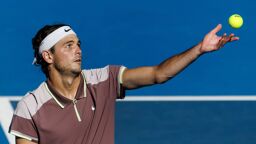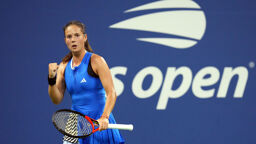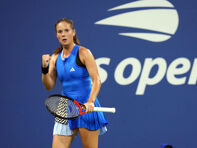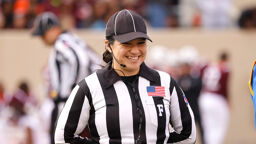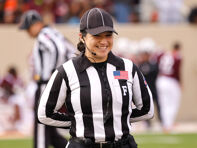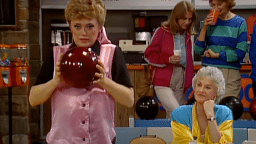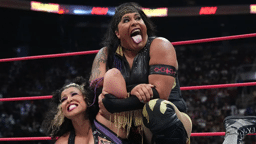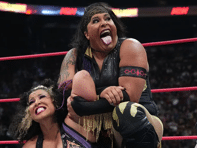After several routine days that were downright ho-hum, the U.S. Open finally saw its first big upset on Thursday when top-seeded Ana Ivanovic was dismissed in the second round by French qualifier Julie Coin. On paper, the loss is one of the most stunning in U.S. Open history. Never before has a women’s #1 lost so early at the Open; Coin, ranked #188 in the world, has struggled so mightily that she almost quit the sport; and the loss all but assures that that a new woman will be ranked number one at the end of the season’s last major. Yet in reality this upset is emblematic of the entire season.
After several routine days that were downright ho-hum, the U.S. Open finally saw its first big upset on Thursday when top-seeded Ana Ivanovic was dismissed in the second round by French qualifier Julie Coin. On paper, the loss is one of the most stunning in U.S. Open history. Never before has a women’s #1 lost so early at the Open; Coin, ranked #188 in the world, has struggled so mightily that she almost quit the sport; and the loss all but assures that that a new woman will be ranked number one at the end of the season’s last major. Yet in reality this upset is emblematic of the entire season.
Women’s tennis this year has been the sporting equivalent of a headless chicken, clinging to life with no sense of direction after last year’s top player – seven-time Grand Slam champion Justine Henin – started the year with a losing streak that ultimately prompted her shock retirement in the spring. Henin no longer had the motivation to play and the women behind her in the top ten don’t have the consistency needed to guide the tour. The top women are always injured and, when they do play, do not consistently advance enough to create interesting rivalries. Ivanovic, the French Open champion this year, was practically number one by default. Ranked at the top because someone has to be. Now, no less than five women have the chance to ascend to the top spot when the tournament is finished.
Perhaps it will be Jelena Jankovic, who spent a week at number one this summer. Currently ranked second in the world, Jankovic has never been to a Grand Slam final and, judging from her early round play in Flushing Meadows, is in no danger of making her first major final here in New York. It could also be Svetlana Kuznetsova, the self-doubting Russian who has not won a title in 2008. At least the Kooz is a former U.S. Open champion, having won the event in 2004. Kuznetsova was also last year’s runner-up. Elena Dementieva, she of the chronic double faults, won the Olympic Gold Medal and is suddenly an elite player again. A solid run at the Open could bag her a maiden Slam title and the top spot in tennis. Dinara Safina has raised her game a level this year, improving her fitness tremendously. Safina was the runner-up to Ivanovic in Paris and has probably been the best player on the summer hard courts this year, winning the Canadian Open and taking silver in the Olympics. The second place finishes in France and Beijing were great accomplishments and tangible proof of Dinara’s improvement, yet they hardly seem worthy of the top ranking. Couple those with a U.S. Open title, however, and the top spot would be well deserved. Finally, Serena Williams could return to the number one spot. She was the Wimbledon runner-up and may very well be the best player in the sport when she’s on, but Williams is a shadow of the woman who dominated the game early in the decade in winning the “Serena Slam.” Williams doesn’t play a full schedule, finds motivation in fits and starts, and is more prone to upset than she used to be. Nonetheless, a title here could reinstate her at the top of tennis.
Gone are the days of Evert, Navratilova, Graf and Seles. Those legendary women each owned the WTA Tour at some point in their careers. Their passion and brilliance provided the women’s game with the two greatest rivalries in its history in Evert vs. Navratilova and Graf vs. Seles. Evert was challenged and made better by Navratilova. Martina changed the entire sport only to be pushed aside by Graf, who was then supplanted by Seles. The late 80s and early 90s saw all four women as active champions on tour and was truly a golden age for the game. Today’s top players seem to be more challenged by their own demons, unable to get out of their own way, and therefore unable to challenge one another in any meaningful way. Regardless of who emerges as No. 1 at the end of the U.S. Open, it’s a sure bet that she won’t stay there for long.
-Wyman Meers





